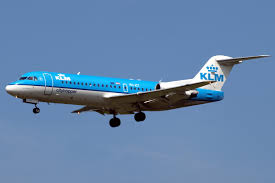The Evolving Landscape of the Airline Industry in 2023

Introduction
The airline industry is a crucial component of the global economy, facilitating travel, commerce, and tourism. As we navigate through 2023, the sector is experiencing significant changes fueled by emerging technologies, shifting consumer preferences, and ongoing recovery from the COVID-19 pandemic. Understanding these trends is key for travelers, industry stakeholders, and policymakers.
Current Trends in the Airline Industry
One of the most notable changes in the airline industry is the rapid adoption of technology. Airlines are increasingly investing in automated check-in systems, biometric security measures, and AI-driven customer service platforms. This shift is aimed at enhancing the passenger experience, reducing wait times, and minimizing operational costs.
In addition to technological advancements, sustainability has become a focal point for the airline industry. With increasing pressure from governments and consumers alike, airlines are seeking to reduce their carbon footprints. Many companies are investing in newer, more fuel-efficient aircraft, as well as exploring alternative fuels, such as sustainable aviation fuel (SAF). A recent report from the International Air Transport Association (IATA) highlights that airlines aim to achieve net-zero carbon emissions by 2050, showcasing their commitment to sustainability.
Another significant trend is the recovery of international travel, which has seen a steady increase in demand. According to IATA, global air travel reached about 80% of pre-pandemic levels in late 2022 and shows continuing growth into 2023. As travel restrictions ease and vaccination rates increase, airlines are expanding routes and increasing flight frequencies, particularly to popular tourist destinations. However, challenges such as labor shortages and rising fuel costs are acting as hurdles to consider.
Challenges Facing the Airline Industry
Despite the positive trends, the airline industry is not without its challenges. The projected rise in fuel prices due to geopolitical tensions, including the conflict in Ukraine, is a concern that could hinder profitability. Additionally, airlines are grappling with staffing shortages that emerged during the pandemic, leading to flight cancellations and delays, potentially affecting customer satisfaction.
Conclusion
The airline industry is at a crossroads, facing both unprecedented challenges and opportunities. As technology advances and a newfound focus on sustainability reshapes its operations, the sector is poised for a transformation in how it connects the world. For travelers, this means not only more efficient services but also a growing emphasis on eco-conscious choices. Observing these trends will be essential for anyone looking to navigate the skies in 2023 and beyond.








